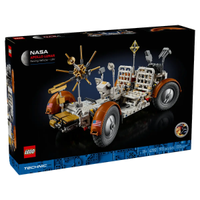Lego rolls out details about Apollo lunar rover model coming in August
The set includes a displayable model version of the lunar rover module carried by Apollo 17.
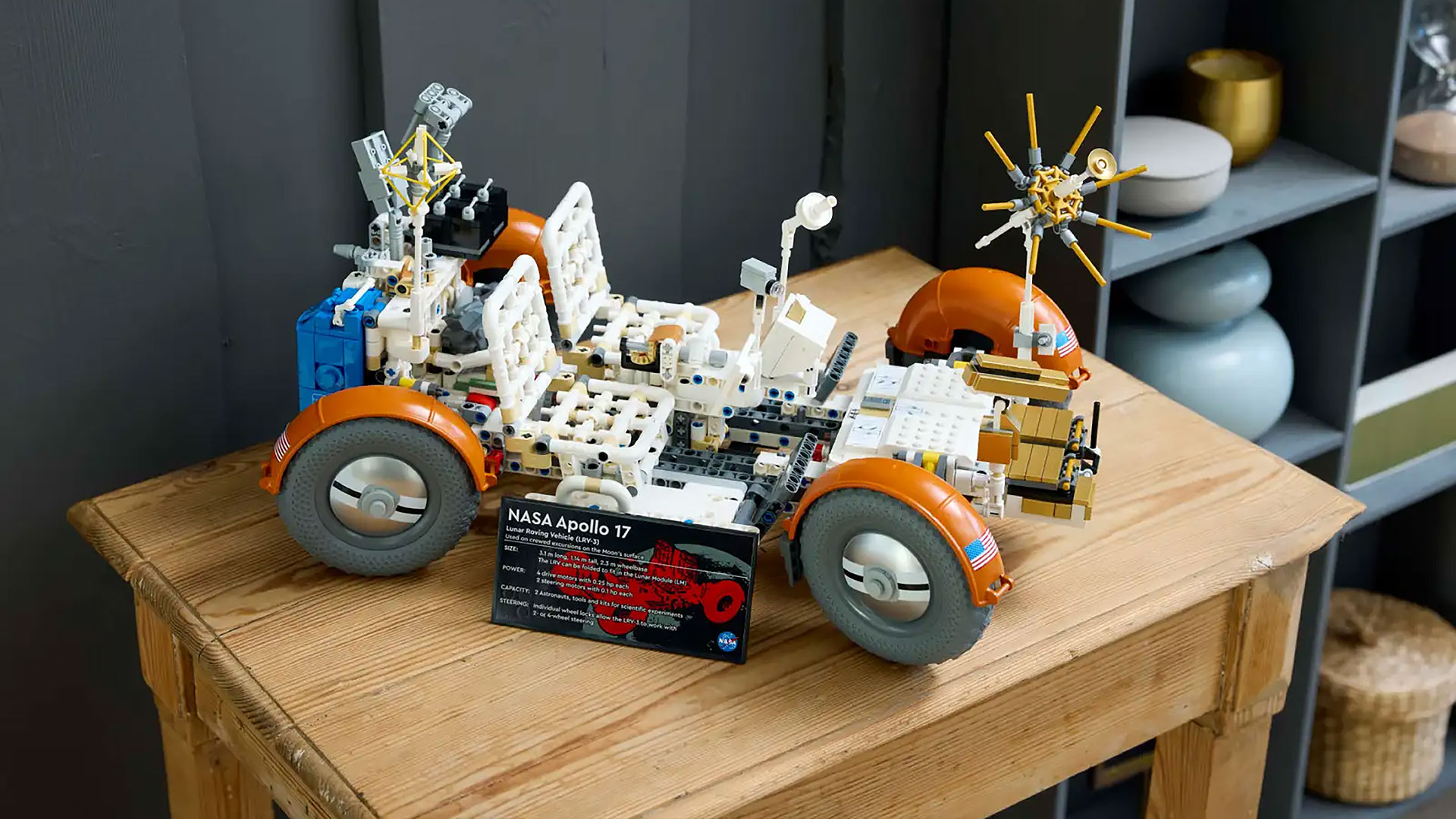
Lego is gearing up to deliver a detailed model of the original "rock and rolling ride," the electric buggy driven by NASA's last three Apollo crews to explore the moon.
The new Lego Technic "NASA Apollo Lunar Roving Vehicle - LRV" set will roll into Lego stores on Aug. 1.
"Embark on a journey to the moon with this detailed Lego Technic NASA model set for adults. The set includes a displayable model version of the lunar rover module carried by Apollo 17, plus three attachable equipment sets," reads Lego's website.
A natural follow-up to Lego's earlier released Saturn V rocket and Apollo 11 lunar module, the LRV (set no. 42182) includes 1,913 pieces and is can be pre-ordered now from Lego's online shop for $219.99 (€219.99 or £189.99).
Related: The Apollo program: How NASA sent astronauts to the moon
Lego NASA Apollo Lunar Roving Vehicle: Preorder for $219 at Lego.com
Reenact the Apollo program of lunar exploration with this detailed Lego Technic set for adults. The Apollo Lunar Roving Vehicle set includes a displayable model version of the lunar rover module carried to the moon by Apollo 17, full of authentic details.
After successfully landing two crews on the moon in 1969, NASA sought a way to extend the distance that the astronauts could traverse to explore more of the surrounding lunar terrain. At first, the agency tried using a rickshaw-like vehicle (called the Modularized Equipment Transporter, or MET) to increase the number of tools that could be hauled to more distant sites, but the hand-pulled cart proved difficult to keep moving.
What the astronauts really needed was a motorized vehicle, which Boeing, working with GM (General Motors) and Goodyear, delivered. The Apollo Lunar Roving Vehicle (LRV) ultimately enabled Apollo 17 astronauts Gene Cernan and Harrison Schmitt to venture as much as 4.7 miles (7.6 kilometers) away from their lunar module. (The distance was still limited by how far the crew could walk given their oxygen supply in case the rover broke down.)
Over the course of three expeditions each, the Apollo 15, Apollo 16 and Apollo 17 astronauts drove their rovers a total of 17.3 miles (27.9 km), 16.6 miles (26.7 km) and 22.2 miles (35.7 km), respectively.
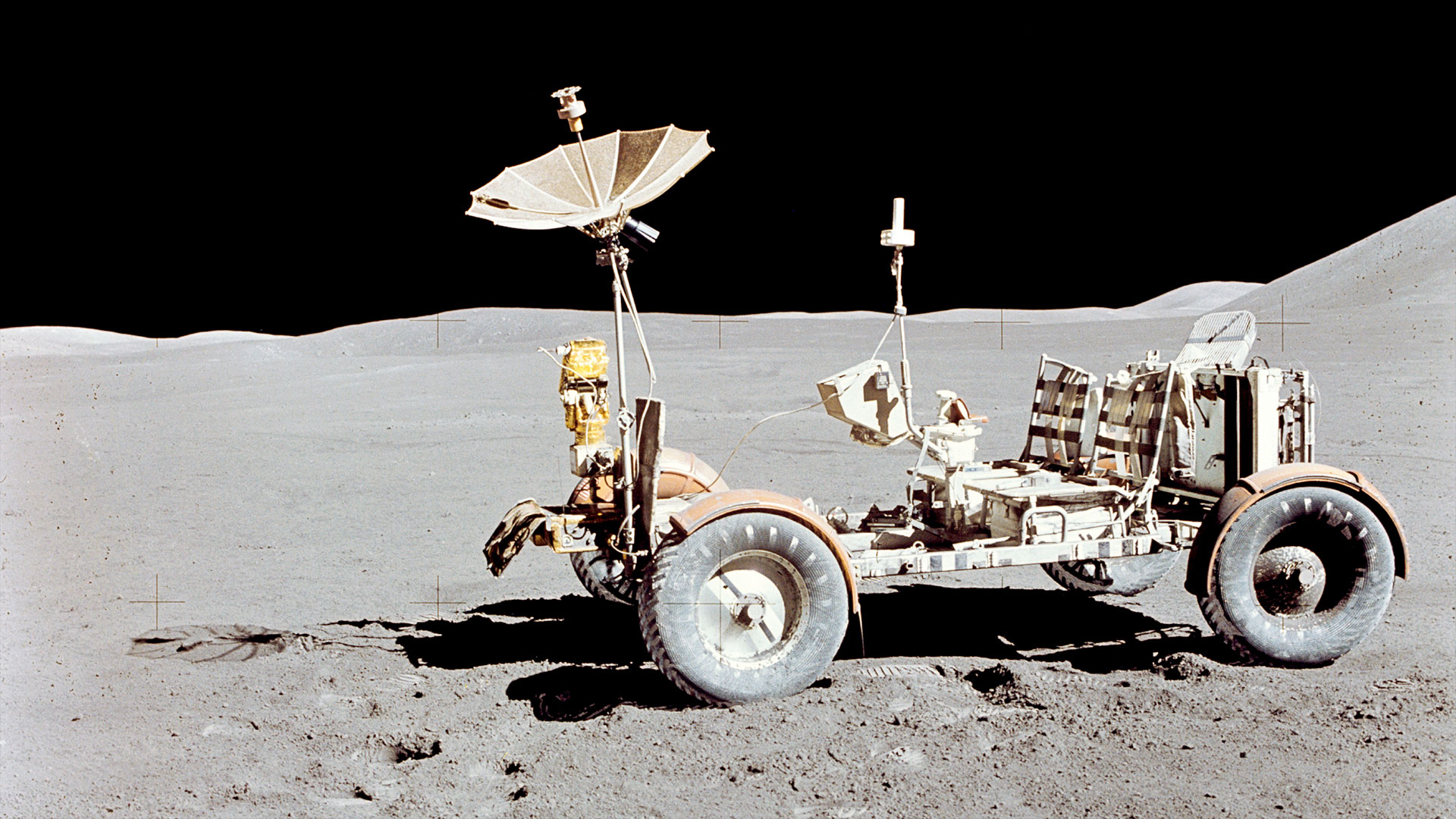
The Lego Technic NASA Apollo Lunar Roving Vehicle - LRV reproduces the moon buggy at 1/8th scale, down to some of its smallest details. The build is divided into four major components: the four-wheeled chassis with its integrated control and display console and seats; the forward chassis with a high-gain antenna and TV camera; the lunar communications relay unit (LCRU), including a low-gain antenna and 16mm camera; and the aft pallet assembly with a tool collection (including a rock hammer, drill kit, pipe wrench and adjustable scoop) and lunar experiments.
Just like the real lunar rover, which needed to be compact enough to fit inside the descent stage of the lunar module, each of the latter three Lego sections can be removed so that the main chassis can be folded. When in its stowed configuration, the full-size LRV was just over half its full length of 10 feet (3 meters).
When deployed, the Lego rover can be steered using the same T-shaped hand controller that the astronauts used, and it features a suspension system allowing it traverse over the rough lunar terrain. Though the model is hand-powered, the real rover used batteries and the Lego model of such is detailed to include its heating and cooling elements,
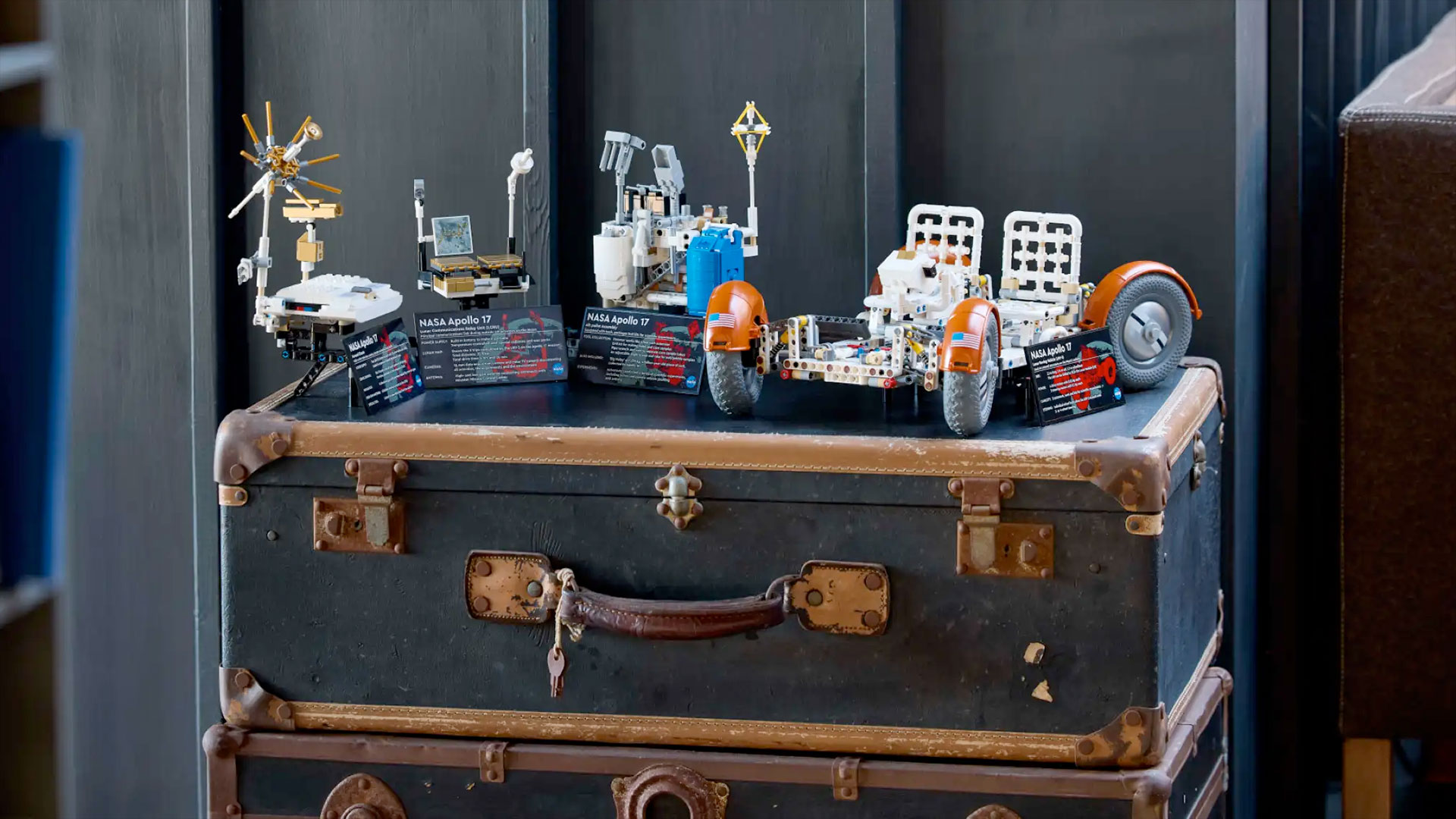
The Lego LRV also includes a few pieces specific to at least two of the missions that used the rover. A collection of "moon rocks" is among the model's features, including one significantly larger than the others representing "Big Muley" — the largest rock sample to have been brought to Earth by Apollo 16 astronauts John Young and Charlie Duke.
Also included is the Traverse Gravimeter Experiment, which measured the moon's geological structure as Cernan and Schmitt drove around Taurus-Littrow. Another nod to the last mission to land humans on the moon (to date) is the map mounted to the LCRU — it details the actual paths that the Apollo 17 LRV traversed on its three drives. (Unfortunately, the set does not appear to include a way to convert the map into a makeshift replacement fender, as Cernan and Schmitt had to do on their second outing.)
The set also had to forgo the fine wire mesh that made up the dish of the high-gain antenna and the rover's mesh tires (though the latter is molded to give it a mesh-like look). Perhaps that can be excused, though, as the actual rovers used by the astronauts to train needed to use rubber tires, as the mesh could only support the weight of the vehicle in the low-gravity environment of the moon.
Related: NASA picks 3 companies to design lunar rover for Artemis astronauts to drive on the moon
Get the Space.com Newsletter
Breaking space news, the latest updates on rocket launches, skywatching events and more!
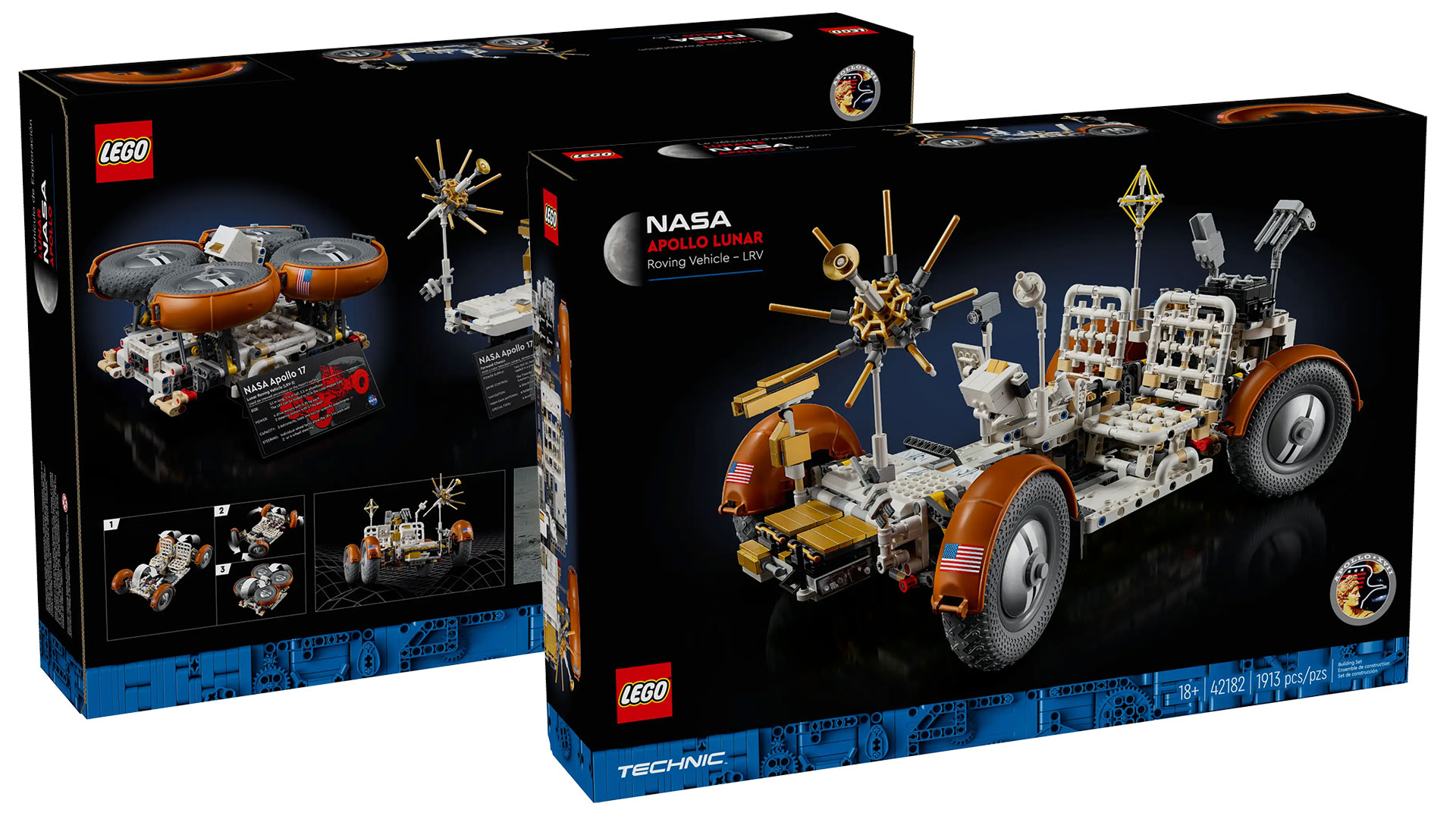
The Lego Technic NASA Apollo Lunar Roving Vehicle - LRV set is the company's second model of the historic vehicle, following a much more rudimentary, red, white and blue buggy that was included in set 565, "Moon Landing," released in 1976. Lego has also made other moon rovers as part of its various fictional space-themed sets and a 2022 Lunar Roving Vehicle (60348) that was based on NASA's early concepts for its current Artemis program.
Follow collectSPACE.com on Facebook and on Twitter at @collectSPACE. Copyright 2024 collectSPACE.com. All rights reserved.
Join our Space Forums to keep talking space on the latest missions, night sky and more! And if you have a news tip, correction or comment, let us know at: community@space.com.

Robert Pearlman is a space historian, journalist and the founder and editor of collectSPACE.com, a daily news publication and community devoted to space history with a particular focus on how and where space exploration intersects with pop culture. Pearlman is also a contributing writer for Space.com and co-author of "Space Stations: The Art, Science, and Reality of Working in Space” published by Smithsonian Books in 2018.In 2009, he was inducted into the U.S. Space Camp Hall of Fame in Huntsville, Alabama. In 2021, he was honored by the American Astronautical Society with the Ordway Award for Sustained Excellence in Spaceflight History. In 2023, the National Space Club Florida Committee recognized Pearlman with the Kolcum News and Communications Award for excellence in telling the space story along the Space Coast and throughout the world.

